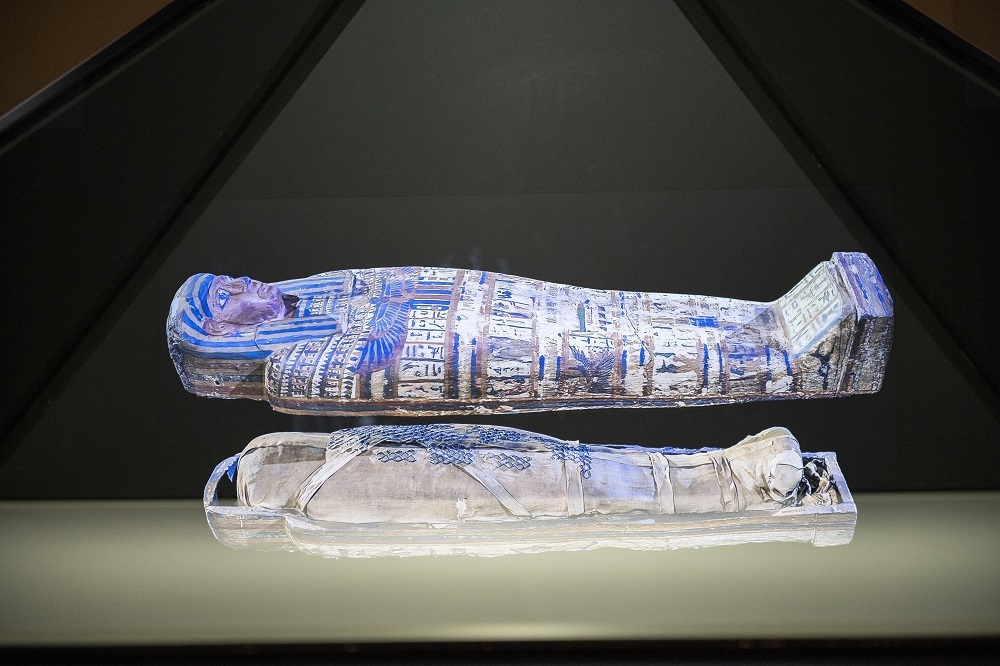Computed Tomography (CT) scans
A CT scanning device uses X-rays and computer modelling to create very detailed images of the inside of the human body. The body is scanned in slices, and the computer uses the data to build up a three-dimensional picture.
In medicine, CT scanning has many uses, allowing doctors to diagnose and treat conditions such as cancer. CT scanning has also had great benefits to archaeological research. Before X-rays and CT scans were available, the only way to look inside a mummy was to unwrap it. From the 1890s, X-ray radiography allowed researchers to see the bones of mummies, and hard items such as amulets in the mummy wrappings, but not to visualize the whole interior of the body. CT scans can clearly distinguish tissue boundaries and show the subtle details of internal organs.
The first CT scan of a living person took place in 1971. The first mummified remains were scanned shortly afterwards, with an attempt at the Royal Ontario Museum to scan the 2000-year old brain of a young man named Nakht, followed by a full body scan in 1976 of the mummy of Djed-maat-es-ankh, a female temple musician.
In the early 1990s, methods for calculating and representing CT scan data were enhanced and continue to improve, allowing much more detailed three-dimensional visualisations, such as those used to view Ta-Kheru’s mummy.


